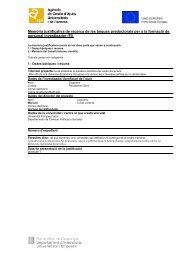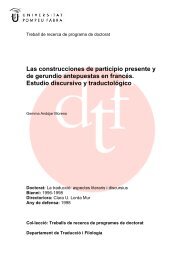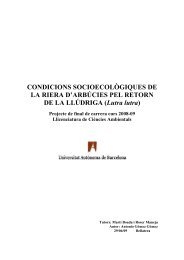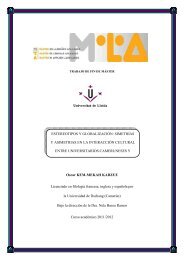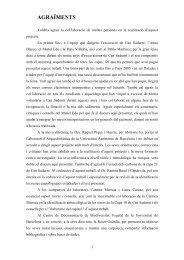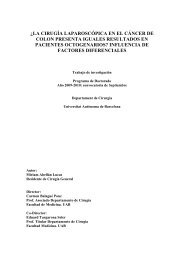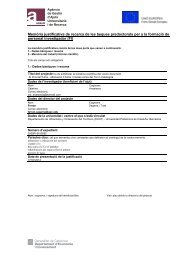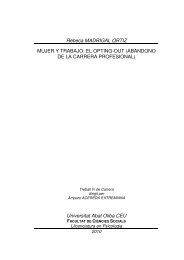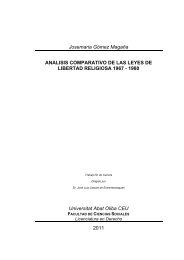Síntesis y caracterización de complejos moleculares de ... - Recercat
Síntesis y caracterización de complejos moleculares de ... - Recercat
Síntesis y caracterización de complejos moleculares de ... - Recercat
You also want an ePaper? Increase the reach of your titles
YUMPU automatically turns print PDFs into web optimized ePapers that Google loves.
3.2.3 <strong>Síntesis</strong> <strong>de</strong> [Py4ImH]Br (L1)<br />
9<br />
8<br />
10<br />
7<br />
5<br />
6<br />
N<br />
4<br />
N N N<br />
N<br />
2<br />
3<br />
1<br />
En un balón con un agitador se aña<strong>de</strong>n 382 mg <strong>de</strong> imidazol (9,55 mmol) , 650 mg <strong>de</strong><br />
NaOH (9,55 mmol) disueltos en una mezcla <strong>de</strong> agua (4 mL) y acetona (10 mL), y se<br />
agita durante 20 minutos. Pasado este tiempo se aña<strong>de</strong>n 2,5 g <strong>de</strong> bis(2-<br />
piridil)bromometano (10,05 mmol) y se calienta a reflujo durante toda la noche.<br />
Pasada toda la noche, se enfría la mezcla, se aña<strong>de</strong> otra fracción <strong>de</strong> 2,5 g <strong>de</strong> bis(2-<br />
piridil)bromometano (10,05 mmol) y se vuelve a calentar a reflujo toda la noche. Al día<br />
siguiente se para el reflujo, se enfría la solución a temperatura ambiente y se evapora<br />
el disolvente totalmente, quedando un aceite marrón. Se aña<strong>de</strong>n 10 mL <strong>de</strong> agua y 50<br />
mL <strong>de</strong> CH2Cl2, y se separa la fase orgánica. La fase acuosa se extrae con más CH2Cl2 (5<br />
x 10 mL), se juntan todas las fases orgánicas y se secan con Na2SO4 anhidro. Después<br />
se reduce el disolvente hasta tener aproximadamente unos 25 mL y entonces se le<br />
aña<strong>de</strong> 15 mL <strong>de</strong> éter observándose la aparición <strong>de</strong> un precipitado <strong>de</strong> color crema. Se<br />
enfría a -25 ºC para precipitar lo máximo posible el producto, se filtra y se seca con<br />
más éter, obteniendo así L1. Rendimiento: 1,08 g obtenidos (40%).<br />
1H NMR (250 MHz, CDCl3) δ= 7,23 – 7,30 (m, 4H, H9), 7,64 – 7,74 (m, 8H, H8, 10),<br />
7,77 (s, 2H, H4), 7,99 (s, 2H, H3), 8,57 (d, J = 4,9 Hz, 4H, H7), 10,64 (s, 1H, H1).<br />
N<br />
Br<br />
23




